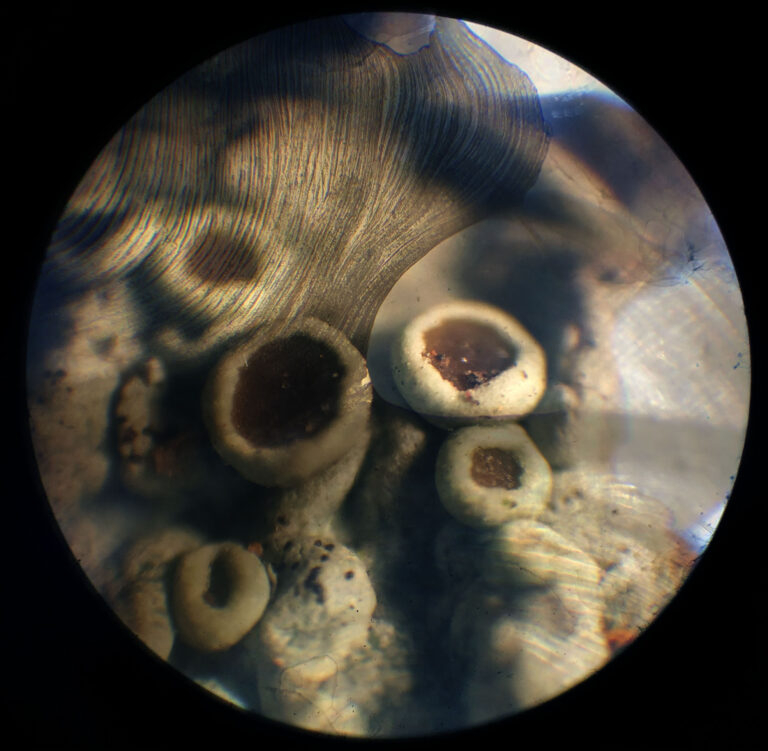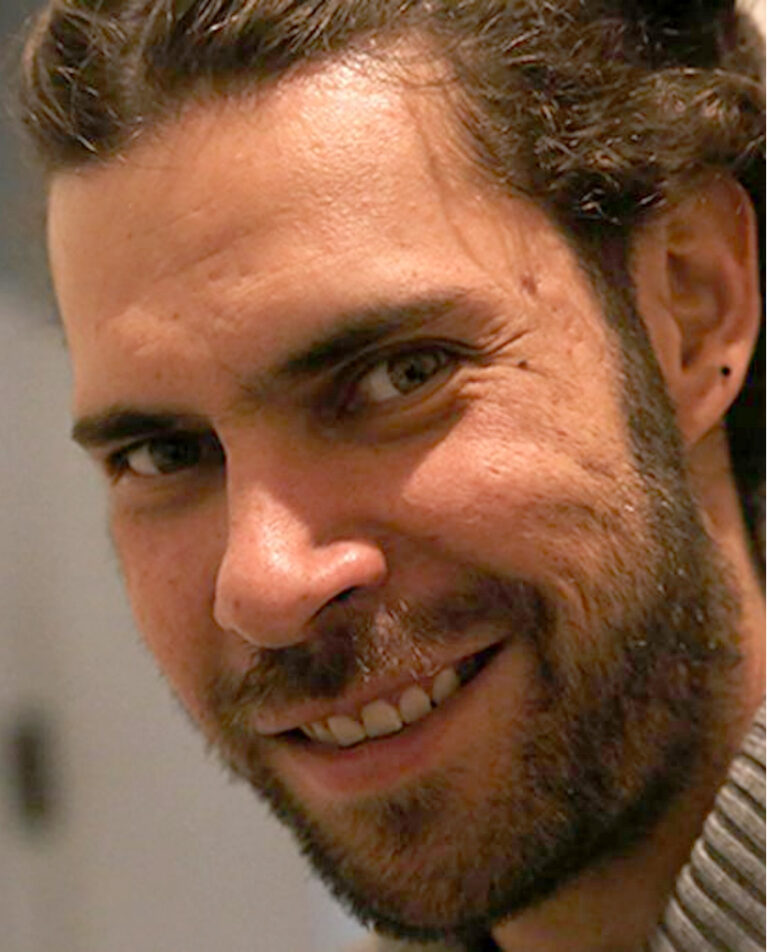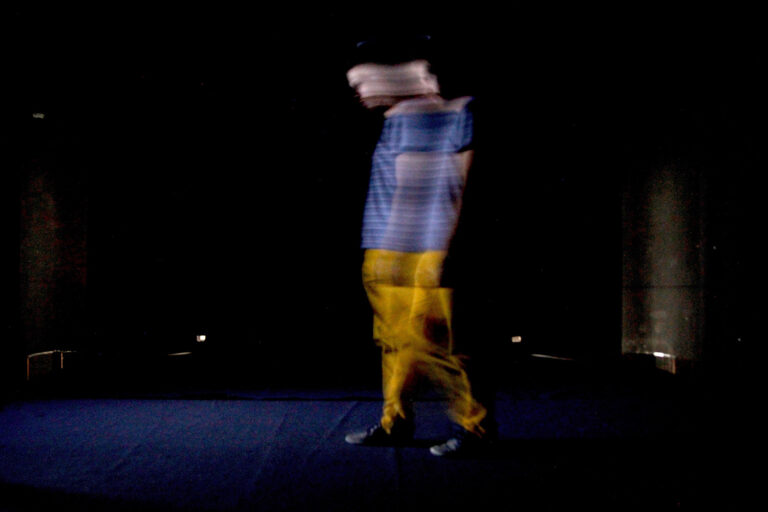The two Mexican artists Marte Roel (based in Zurich, CH) and Ary Ehrenberg (based in Mexico City, MX) will present a newly developed live cinema performance for the CP program, engaging and taking the audience deep into the blurry areas where nature and technology, language and nonverbal communication overlap to become indistinguishable. Resonating strongly with the topics and questions that COLLECTIVE PRACTICES aims to address in its exploration #KNOWLEDGES, both artists work at the intersection of art, science and technology, and have been exploring and approaching these bodies of knowledge from the perspective of the western scientific canon, as well as through their artistic practice.
This interview with the artists, led by curator Daniela Silvestrin, gives a first introduction and insight into their work in general and the performance they present on July 12, 2020.
DANIELA SILVESTRIN: Hi Marte, hi Ary! We are looking much forward to the live cinema performance that you developed for the COLLECTIVE PRACTICES program. But before we see you perform on Sunday and get to know your work better, let me ask you a couple of questions to introduce you to the audience.
Can you tell us about how you see your individual artistic practice and research relate to our theme of COLLECTIVE PRACTICES?
MARTE ROEL (MR): While for me there is an intrinsic connection between collective practice and virtually any human (and non human!) activity, this link is not always overt. The inclusion of diverse ways of knowing, the interaction of plural perspectives, accounting for the intrinsic impact of our shared and embodied condition in our discourse is much more explicitly part of our interdisciplinary collective (BeAnotherLab) than within the boundaries of empirical science in an academic institution. I understand and am compassionate about the need of scientific exercise to have close boundaries for its principles of hypothesis testing and supposedly unbiased knowledge creation. However, it’s surprising to find some rigid old ideas still rooted in scientific tradition. Recently, for example, when submitting a paper for publication, I was asked by a reviewer to remove the first-person pronoun from the manuscript. As seen then, knowledge is implicitly seen as impersonal and disembodied. While this is not to imply that empirical science is bad (on the contrary I think it’s of great importance), its apparent superiority over complementary ways of knowing is what I find troublesome. These are interesting times, where the need for an alternative to the normative way of approaching knowledge is more present in the social discussion. This is of course evidenced by the current COVID-19 crisis. This is where I find the most purpose in my practice and where it is linked to collectivity, an epistemology whose validating principle is to seek for commonality and ecosystem harmony. However, and unfortunately, I believe such collective purpose is hindered by some systematic principles of the common lifestyle that we live with (and that I very much participate in!)
ARY EHRENBERG (AE): Well, I have always found it difficult to work alone, in my personal life and in my work I always look for feedback. I think of this idea of liquid identity – which, incidentally, is the title of a Live Cinema work I developed with Marte – in which our identity is made up of fragments of all the relationships we have with other people along our life, as well as relations with other living beings, our journeys and the various spaces that we inhabit. Those small frictions and collective gestures are what determine and guide our actions and our interests. In this sense, I think about the authorship of ideas and I think that no idea is only mine; it is a kind of shared agency: a conversation, a recommendation for a book, a tweet. They make up this cloud of collective ideas that you already feed on at the same time you feed.
In this context, where do you see the biggest impacts / changes / resonances of your work with the current crisis? How does and probably will this pandemic both disrupt and maybe inspire your work?
MR: There is of course uncertainty and pain for the suffering of the world and its near future, I feel for people directly harmed and the many indirect damages of the pandemic. There is also potential damage in my collective’s practice that relies on close proximity and intimacy. On the other hand, I have some optimistic moments, a potential window for a paradigm shift comes to mind. But, as plastic as our behavior was when stepping into quarantine mode, it has been able to come back to normal. However, I hope that we remember the behavioral plasticity that we collectively showed these months! And that we don’t forget the marvels of living in a slowed-down world, with its simplicity and the importance of our basic affective bonds.
Marte, your work and practice resonates strongly with the types and ways of engaging with collectivity (both as a method and as a concept) through forms and body of #KNOWLEDGES, one of our thematic explorations within the CP program. You both work as an artist and as a scientist — how do these different approaches to the production and evaluation of “knowledge” come together, influence or mutually exclude each other in your work?
MR: Again, planting seeds towards a more inclusive epistemology that fits the complexity of our world is part of my integrative practice. I however don’t know if I would have arrived at this place without the relations from different bodies of knowledge. This attempt towards a more plural way of knowing that considers affect, commonality and care (human and non-human) as principles of validation, however, does not fit in my institutional academic practice (within science). At the moment, I’m working both on my doctoral dissertation in cognitive neuropsychology but also on its complement: an antithesis (or prosthesis?), a more unlimited space meant to share, to create, to feel, and embody, where content is paralinguistic and explicitly alive. I find science very limiting for my active research regarding the malleability, multidimensionality and sharedness of the living body. I hope that these exchanges between spaces, disciplines and implicit dynamics, bring about conversations and alternative routes of dialogue for change. Sometimes it is alienating to have a different perspective than my peers and even than certain aspects of myself, as is often the case within my scientific practice. I often struggle attempting to publish works that I don’t relate to or even disagree with. But I somehow still find this dialogue important, with the hope that it’s transitional. I am of course thankful that there are spaces such as CP where approaches such as mine are welcome.
Ary, a strong focus of your artistic work is on the relationship between media and environment and the attempt to understand the phenomena that are generated within nature and society through technology. In your biography you also write that you are interested in “highlighting speed as a phenomenon of our time and slowness as a virtue”. This reminded me of the work of French philosopher and theorist Paul Virilio, and the concept of “dromology” he coined as the science of speed to discuss the significance of speed and technology in the postmodern era. In his writing, he discusses the way in which the increasing speeds of transmission have shaped not only individual perception but also social, political, and cultural life; he says that we are replacing the expanse of the world with speed, with the speed of transportation, or electromagnetic transmission, and that this cannot be done without provoking a “serial accident”. In what way do such ideas about speed play a role in your work, and how are you working with the concepts of speed and slowness?
AE: Yes, Virilio is one of the theorists that has very much influenced my work, definitely we’ve been hit by speed! I have always been fascinated by tools, and the possibilities that these give us to extend our body and equip it with other capacities. We can be amphibians and navigate under the sea, or immerse ourselves in endless virtual realities. Technology has allowed us to understand the world and reality in unimaginable ways. It has become an extension of ourselves, through which we perceive and interact with our environment. But this raises other phenomena, such as the acceleration of time, which occurs due to the insatiable search for a new paradigm, for the next scientific revolution. The speed at which everything progresses is dizzying and worrying, bringing with it other major problems that can lead to natural catastrophes, such as species’ extinctions or pandemics. That is why I think of the slow as a virtue, an endangered kind, the slow as a biological time and not an artifice of techno-scientific activity. The process that we have experienced in this global health crisis makes us realize that what seemed impossible is actually possible, we can slow down.
Within my work I have explored for a few years now the idea of slow media from which I have prototyped a series of works accompanied by an investigation entitled praise of slowness, in which I make use of technologies with natural elements as sources to generate energy, such as water, wind and sun. But also my research has had a strong inclination towards possible future speculation from the implications of technology, a fairly common topic today and luckily in the interest of many. Curiously, this exhaustive research on the future and its possibilities has led me again to be interested in the past, to realize that in order to speculate further into the future, one must take flight into the past. It has prompted me to research evolutionary processes of the earth and species, processes that involve other times, other scales that from our limited biological configuration and human subjectivity are difficult for us to measure. Times that go beyond the slow.
Marte, back in Mexico, you founded the Center of Independent Studies. Can you tell us a bit about this project and the motivation behind its foundation?
MR: For a long time, I searched for a space outside of academia, where we could engage in conversations about timely topics, run empirical studies, and connect society in general with scientific practice. It was founded with such principles in mind, as a space for the integration of scientific practice and society in general, where anyone could do research regardless of their academic background or credentials, and where the intrinsic problems in the relation between experts and non-experts could be transcended. With focus on empirical science, it was a connecting point where the community in general could be actively engaged as experts in their immediate surroundings and needs.
Finally, can you both tell us something about what aspect or idea in relation to the concept of COLLECTIVE PRACTICES you will explore in the live cinema performance?
MR: Given the context of confinement, we decided to present a live cinema piece, a semi-improvised audiovisual essay. I have worked with my very dear brother Ary Ehrenberg before on a few live cinema works. This time we are taking many common interests that are also pillars to our practice, ranging from animism as a natural ontology to the boundlessness of the living body. The piece is created for CP. We aim to walk through a history of Western ontology, and a possible future. The work will be performed from Mexico and Switzerland in real time and jointly uses field recordings of the past few years and digital processes to talk about ourselves as indivisible from our environment, as a superorganism.
AE: Well, the idea of performance is based on life, from an animistic and panpsychism vision, where the limits of the individual dissolve from “I am” to “we are”. An essay on the history of western thought, where at times we think of us as a whole, and then split to come back together. I like to think of life as a series of agreements, for example my body or that of my plants, they exist thanks to a series of interspecies agreements and collective practices, convenient exchanges between millions of beings to have the possibility of occurring, this is what Birdsongs of a Hyperorganism is all about.
Thank you!
More information about the event here .




